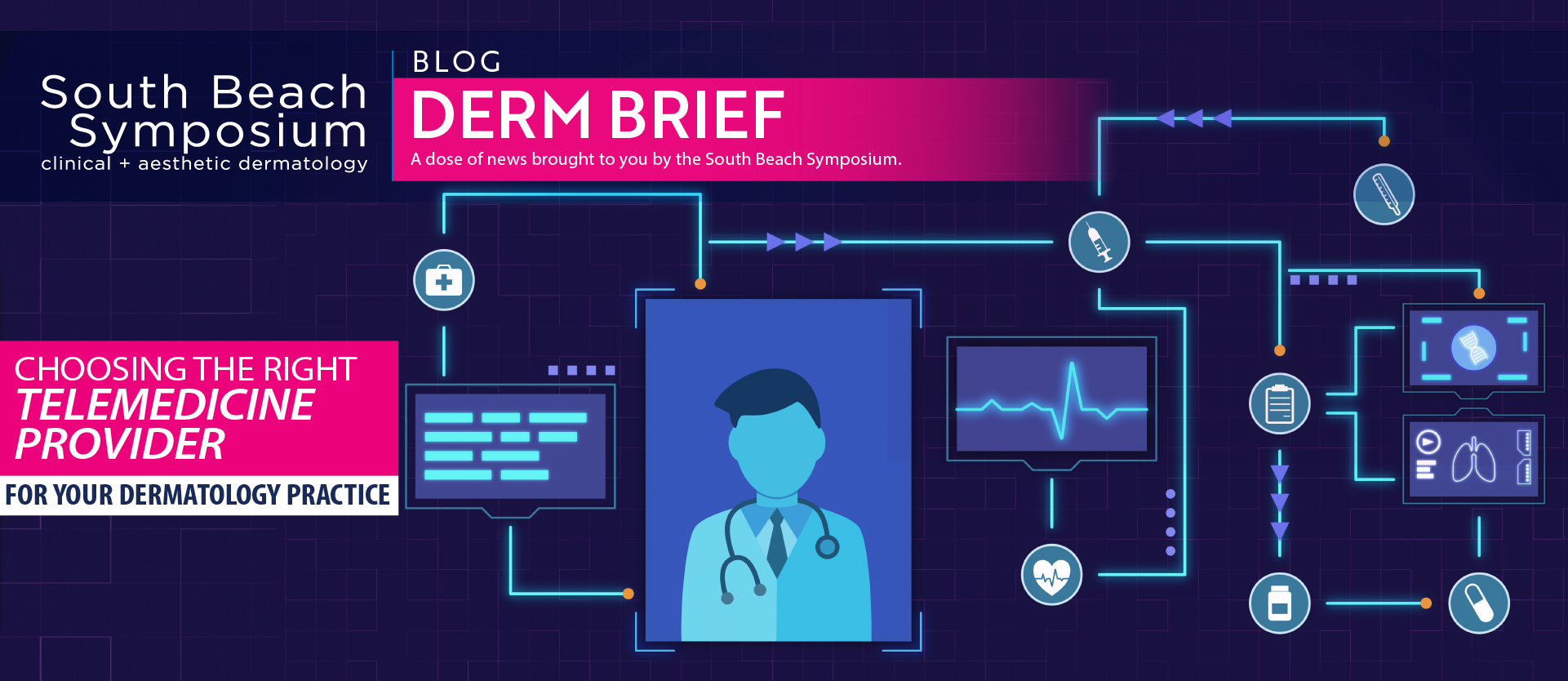In response to the prevailing COVID-19 outbreak, many individuals have shifted to a digital health care model, opting to attend routine appointments via telehealth platforms, while others are refusing to seek medical care altogether as a result of virus-spurred fears. At the same time, cosmetic and elective procedures have been postponed while some state orders have forced aesthetic medicine practices to temporarily shut their doors. The subsequent decrease in demand for face-to-face care has contributed to the exponential growth in telemedicine use across the globe; the number of online medical visits has surged 50% for the month of March, per data from Frost and Sullivan consultants.
In contrast to previous estimates, analysts now anticipate the number of medical care visits to rise above 200 million – up from the forecasted 36 million for 2020 – and all digital health appointments to exceed 1 billion by the end of this year.
Regulatory Changes
As a result of recent regulatory changes, health care providers are turning to popular audio and video communication technologies such as Zoom, the current online conferencing market leader. The broadened restrictions also allow the use of programs such as Apple’s FaceTime, Facebook’s Messenger video, and Skype. The agency notes, however, that patients should be made aware of the potential cybersecurity and data privacy risks associated with these platforms.
In addition, this applies to all virtual medical services provided at this time. “This exercise of discretion applies to telehealth provided for any reason, regardless of whether the telehealth service is related to the diagnosis and treatment of health conditions related to COVID-19,” the HHS outlined in a statement.
How to Select the Right Telemedicine Provider
Dermatologists faced with a seemingly abundant array of telehealth providers may find it difficult to select the one that will best suit their practice. Many health care organizations may already be equipped with telehealth functionality, which can allow for seamless integration into practice. However, many smaller practices and individual practitioners may be considering telemedicine for the first time during the COVID-19 outbreak.
For these practitioners, the selection process may be intimidating. There are several essential factors to consider when evaluating potential vendors depending on the specific needs of the practice. The steps outlined below can help both first-time users and experienced telehealth practitioners navigate the crowded market of telemedicine vendors.
1. Find and Understand Your Options
During the initial stage of searching for a telehealth provider, dermatologists should begin by narrowing down a list of possible contenders that serve their key criteria and goals for the practice. Taking these values into account, dermatologists and other healthcare providers should focus on finding a vendor that has promise for a long-term partnership, instead of a transactional business.
Ultimately, the goal of integrating a telehealth provider into your medical practice is to develop a long-standing relationship with them, in which you have access to an expert resource on demand, support throughout the implementation process and beyond, as well as a safe, dependable online platform for your patients.
Researching potential telehealth services and their reviews is a critical component of the selection process, however, it may prove challenging to filter from the 900+ platforms available. Word-of-mouth referrals and recommendations from your professional network can often help to narrow down a list of possible telemedicine vendors; you can also consider consulting the American Telemedicine Association or state medical association for further platform suggestions.
Keep in mind the specific needs of your practice when selecting a vendor. Many telecommunications platforms are not designed for telehealth services and thus lack in image or video quality, which dermatology practices require. To ensure the efficacy of teledermatology visits, providers need to ensure a clear, detailed image for symptom evaluation and virtual follow-ups – the telehealth vendor must be able to fulfill these needs.
2. Shortlist and Review
Medical providers should select a shortlist of a few high-quality vendors that serve their needs and schedule calls with each one to discuss their product offering, cybersecurity policies, and compliance with state and federal guidelines. Potential partners should also be evaluated on the basis of legal and security standards to ensure your liabilities are minimized.
Upon selecting a few prospective vendor candidates, dermatologists should develop a Request for Proposal (RFP) clearly outlining their practice’s goals and share it with the vendors that most closely align with them.
3. Get to Know the Platform and Team
After receiving and reviewing RFP responses, practitioners may want to ask vendor platforms for case studies, referrals, and reviews to determine their reputability. It may also be beneficial to schedule calls with product engineers and existing customers to gain a more realistic understanding of how the service functions in daily practice.
The next important part of the selection process is familiarizing yourself with the platform and its customer service team – with which you will likely be communicating often. To accomplish this, healthcare providers are encouraged to schedule live demos of the software and informational calls with the vendor team. Over the course of these discussions, practitioners should focus on evaluating the proposed software across the six key factors outlined below to determine whether it adequately addresses their needs.
4. Evaluate for the Six Key Factors
Business
Several important components of the vendor’s business should factor into your final decision, including tenure, funding source, financial stability, notable customers, and other affiliations. Practices should also consider the company’s business model, product cost, reimbursement rates, risk sharing, and payment program options to determine the potential return on their investment. Does the vendor specialize in teledermatology services? Are they aware of federal and private insurance requirements? These are also valuable questions to assess while reviewing potential vendors.
Information Technology
From the technical perspective, the ability of the program to be integrated within a practice’s current IT landscape – and the EHR system in particular – has a major impact on decision making.
The ability of the telehealth platform in consideration to be easily integrated into a practice’s current IT environment should have a significant impact on product selection. As does the cost, process, and timeline of implementation which are essential factors to keep in mind during the health crisis in which care is urgently needed. Other important considerations include: patient geolocation for licensure requirements, patient access to data, customization capabilities, biometrics/RPM integration capabilities, and the impact of regular use on internet and local network usage.
Security
With cybersecurity risks at an all-time high, telehealth vendor security certificates and policies are paramount. While evaluating a potential telemedicine provider, clinicians should ensure it complies with HIPAA, state, and federal guidelines; has a clear liability structure for managing data breaches; and has transparent data use practices. Additional important security factors to consider include user authentication and authorization systems and whether it has in-platform patient consent capabilities.
Usability
One of the most essential factors to keep in mind while evaluating telehealth vendors is the usability of the product itself. During live demos, healthcare providers should note their personal reflections on user experience – will it be easy to use for other care team members and patients? How long does it take for the platform to launch? How many steps are required to launch the application? Other factors for consideration here are: dashboard/workflow assimilation, multi-specialty application, patient and care team engagement metrics, as well as billing and payout processes.
Customer Service
Another important variable to evaluate when selecting a telemedicine provider is the company’s level of customer service and customer relationship management. This includes the degree of support available to them during and after product integration – will staff training be a part of the service? What about patient education? Project management, data analysis, and other practice tools should be considered as well. In addition, the telehealth vendor should provide an adequate degree of technical support for patients who may need assistance with setting up the platform.
Clinical Validation
The final factor dermatologists should seek while choosing a telehealth vendor is the clinical validation of the technology, which can be done by requesting documented clinical outcomes and published peer-reviewed studies.
5. Test the Product
Upon selecting the optimal telehealth provider for your dermatology practice, it is important to test the technology with either a patient advocate, member of a patient advisory board, or other staff member unfamiliar with the product to ensure that it can be seamlessly implemented. Despite prior usability testing, some platforms may prove too complicated for patients to use, requiring additional time spent on training and technical assistance instead of the efficient delivery of digital care.
Setting your dermatology practice up for telehealth success requires the careful consideration of a variety of factors, most notably the 6 key components outlined above. Further, practitioners should make sure that their selections of telehealth vendors are made in accordance with state and federal regulations; medical associations can assist consult on the requirements. Risk and liability mitigation is essential to a safe online practice – clinicians are encouraged to incorporate legal feedback and cybersecurity best practices (link to cybersecurity blog) to mediate potential threats.
Additional information and comprehensive teledermatology guidelines have been made published by the American Academy of Dermatology in an effort to ease the process in a time of urgent need.
To further assist medical practices and providers in selecting the most suitable telemedicine service for them, Healthcare IT News has published a list of telehealth vendors and their offerings for organizations and providers to choose from, accessible here.

















